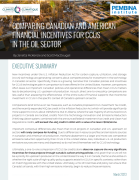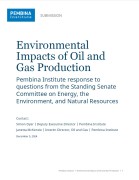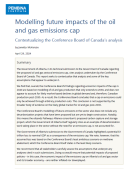This briefing note outlines key information about greenhouse gas emissions from Canada's oilsands today and in the future. Recent attention to the issue of greenhouse gases in Canada and the U.S. prompted the Pembina Institute to outline key issues in more detail.
In particular, there is a growing concern with a substantial increase in total greenhouse gas emissions by 2020 from Canada's oilsands. Part of this increase will occur as the result of in situ production that is set to overtake oilsands mining production in 2017. Continued demand for oilsands production will only exacerbate this increase.
Finally, while it is clear that greenhouse gas emissions from oilsands are small compared to total U.S. emissions, greenhouse gas emissions will increase if reliance on Canadian oilsands continues to grow. Canada is now the largest supplier of crude oil to the U.S. supplying 19 per cent of the country's total crude imports in 2008. This rate is up from 15 per cent in 1998. If Canada plays a growing role in meeting the U.S. need for crude oil, and the oilsands continues to grow and make up a larger portion of Canada's oil production, the oilsands and the emissions associated with them will have a growing effect on climate impacts in both Canada and the U.S. Furthermore, a growing reliance and demand for oilsands in both countries has implications for broader climate policy.








